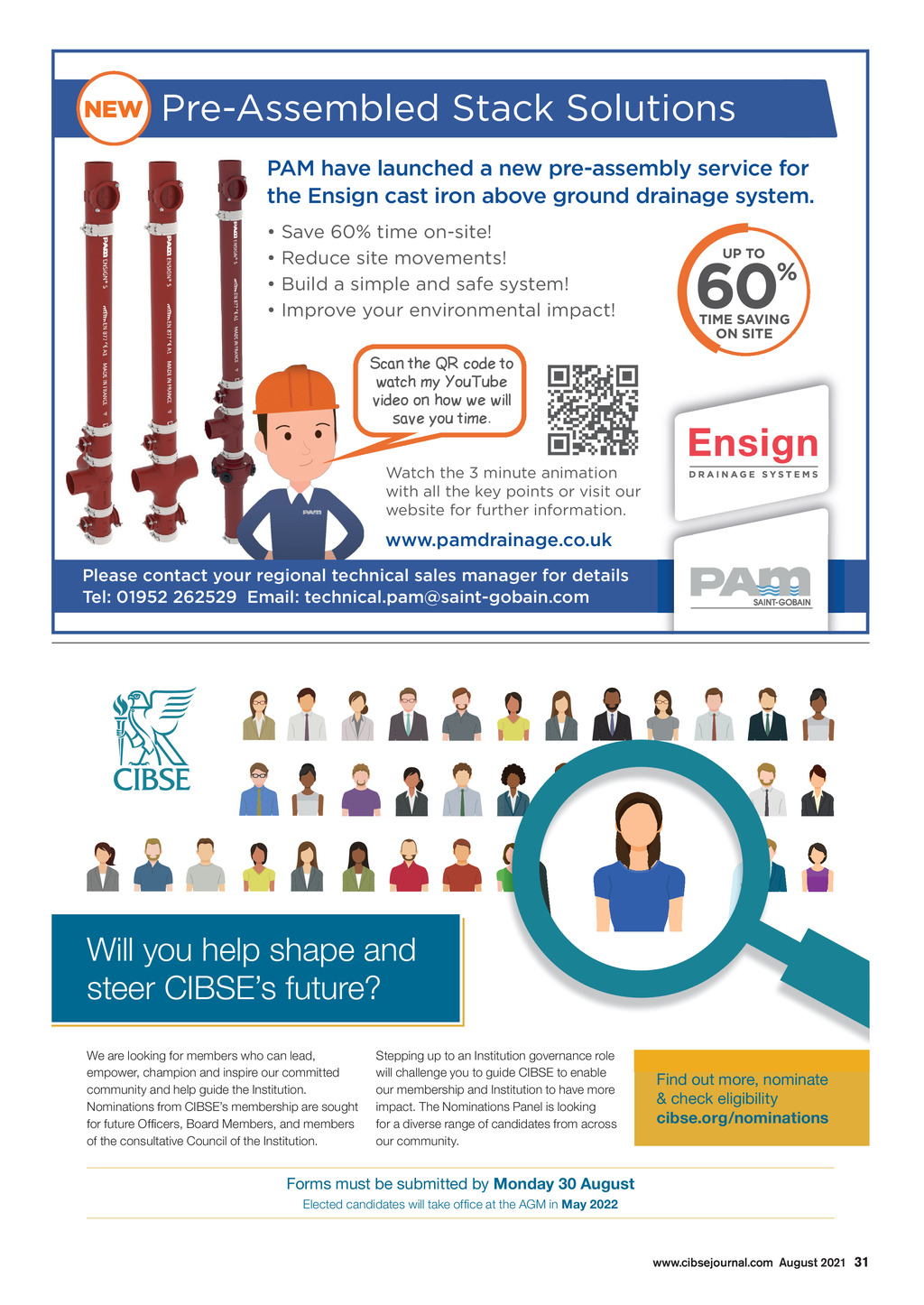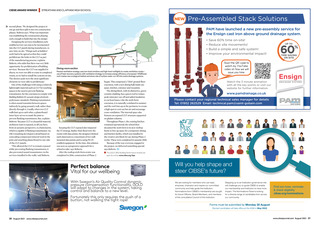


CIBSE AWARD WINNER | STREATHAM AND CLAPHAM HIGH SCHOOL second phase. We designed the project in one go and then split it into two construction phases, Roberts says. What was important was establishing the construction phasing early enough to build that into the design. Designing the services installation early enabled service cut-outs to be incorporated into the CLT panels during manufacture, to save time on site. Things such as builders work had to be agreed so that they could prefabricate the holes in the CLT as part of the manufacturing process, explains Roberts, who adds that there was very little opportunity for prefabrication of building services. Because the CLT was supplied in sheets, we were not able to crane in completed rooms, so we had to install the systems on site. The shower pods were the most significant elements we were able to prefabricate. One of the challenges with using a relatively lightweight material such as CLT for teaching spaces is the need to prevent flanking transmission, for the extension to comply with Building Bulletin 93: acoustic design of schools performance standards. Flanking transmission is when sound transmits between spaces indirectly by going around a wall, rather than directly through it. Usually, when two CLT walls butt up to each other, a plasterboard inner layer serves to mask the joint to prevent flanking transmission. But, explains Roberts: Because CLT is a beautiful material, architects want it exposed, so all you have, from an acoustic perspective, is a butted joint, which is capable of flanking transmission. So, OR Consulting developed a detail based on concealing compressed mineral wool in the joint and attaching plasterboard to one side of the CLT panels. This allowed the CLT to remain exposed while preventing flanking transmission; it also prevented sound transmission via the services installed in the walls, said Roberts. Dining-room section The new entrance and reception is a welcoming space Keeping the CLT exposed also impacted the IT strategy. Rather than flood-wire the rooms with data points, the designers limited each classroom to a maximum of two wallmounted data points and to using Wi-Fienabled equipment. At the time, this solution was seen as a progressive approach for a school to take, says Roberts. After the rooftop sixth-form centre was completed in 2016, construction of Phase 2 began. This comprised a 725m2 ground-floor extension, with a new dining hall/multi-use space, kitchen, entrance and reception. The dining block, with its distinctive, green ceramic cladding, has a green roof to reduce peak rainwater run-off and added insulation to cut heat losses. Like the sixth-form extension, it is naturally ventilated in summer and the roof rises up at the perimeter to create a high spot to vent out hot air and encourage cross-ventilation. The internal space also features an exposed CLT structure supported on glulam columns. Throughout Phase 1, the existing kitchen remained operational; the school then decanted the sixth form to its new rooftop home to free up space for a temporary dining and kitchen facility, which was installed in the creative arts block for use during Phase 2 works. These were completed in autumn 2018. Because of the way everyone engaged in the project, we delivered something special, says Roberts. CJ The 2022 CIBSE Building Performance Awards are open for entries www.cibse.org/bpa Vital for our wellbeing With Swegons g Air Qualityy Control dynamic y pressure compensation p p functionality, y, GOLD will adapt p to changes g in the system, y taking control and balance to a new level. Fortunatelyy this onlyy requires q the push p of a button, not walking the tight rope! 30 August 2021 www.cibsejournal.com CIBSE Aug 21 pp26-28, 30 Collaboration award.indd 30 23/07/2021 12:09